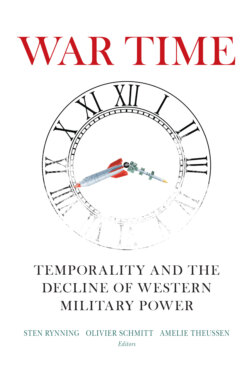Читать книгу War Time - Группа авторов - Страница 5
На сайте Литреса книга снята с продажи.
Foreword
ОглавлениеThere was a time not so long ago when the West hoped that it could stop worrying about its military power, and its ability to project it globally. The Cold War had come to an end with no Armageddon being necessary to determine its outcome. The peace dividend was being richly harvested at home. The citizens of the Western democracies, largely freed of the burdens of conscription and civil defense, came to believe that the residual security threats could be safely dealt with by the small professional armies that remained. If anything, the difficulties of peacekeeping and reconstruction in places like the Balkans, Afghanistan, and Iraq seemed to point to the limitations of military power rather than its utility. Could not development agencies, police trainers, NGOs, and diplomats do a better job? With declining budgets and a fraying link to civil society, armed forces in the Western democracies began to question their purpose and mission.
Yet, as so often in history, predictions of a more peaceful international order have been upended in a quick succession of strategic turning points. Russia has annexed Crimea and deployed its forces and personnel in Ukraine, Syria, Libya, and the Sahel. NATO is back to territorial collective defense. China has flexed its muscles in the East and South China Seas, Iran has spread its military tentacles across the Middle East, Turkey has intervened in Syria and now the eastern Mediterranean and Libya, nuclear modernization is proceeding apace, and it took a massive military coalition led by the United States to defeat a single terrorist group in Syria and Iraq. This year’s annual report by the Stockholm International Peace Research Institute puts global military spending at just short of US$1.7 trillion, its highest-ever figure. Across the board military innovation is accelerating, from hypersonic missiles to space competition to cyber and autonomous weapons. Whatever the Western democracies may think about the usefulness of military power, their adversaries need no such persuasion when it comes to deploying their armies, navies, and air forces to advance their interests and influence in twenty-first-century geopolitics. As Trotsky famously put it: “You may not like war, but war likes you.”
This shift has forced Western policymakers to face some unpleasant questions. How much military power do we need today to counter the threats and uphold our interests? What does this mean in terms of budgets, capabilities, technology, and organization? Are we as far behind our potential adversaries as is often claimed (especially by them) and if so, how can we best catch up, identifying our strengths and exploiting their weaknesses? How can we optimize our military power for deterrence so that we can transit the current turbulence in global geopolitics without lapsing into catastrophic war, particularly between the great powers?
These are tough questions and it is easy for policymakers to become overwhelmed by too many security challenges hitting them simultaneously from too many directions. Likewise pundits disagree over whether the response lies in more tanks or more cyber weapons, more soldiers or more intelligence analysts, engagement abroad, or pulling up the drawbridge at home. The choices range from grand strategy at the top, and how to merge military power with the other instruments of state influence, to the contract for the next field radio at the bottom. So where can the busy policymaker and the interested general reader turn for an accessible and authoritative guide through this maze of interrelated challenges, presented in a single volume rather than in scores of books and hundreds of think-tank reports? The answer is here, in War Time: Temporality and the Decline of Western Military Power.
The merit of this study lies first and foremost in the expertise of the authors who have contributed to it. Their judgments are grounded in deep research and their proposals have been carefully thought through. Yet their chapters have also been subjected to an exceptionally rigorous peer review process to ensure the accuracy and the quality of every paragraph. I myself had the opportunity to participate in this peer review process on one of the two days of workshop sessions at Chatham House and to see how thorough and far-reaching it was. Consequently the reader has the benefit of the best knowledge and most balanced assessments currently available. The second merit is the comprehensive nature of the study. It explores every aspect of security and defense policy, both domestic and international. It looks at alliances such as NATO and the transatlantic defense relationship, the role of the major military powers such China and Russia, the future of interventions based on the lessons learned from past experience, and the prospects for new norms and agreements to constrain dangerous military activity and aggression. Finally a very useful section puts the vital element of technology in the valuable context of speed, process, and military doctrine and organization. This helps to clarify many complex issues and to bring technology and strategy together, when so often they are addressed separately.
For all these reasons I am pleased to endorse this book and am honored to have participated, however modestly, in its elaboration. It is a work that deserves a wide and serious readership, and I am confident it will achieve it.
Jamie Shea
Professor of Strategy and Security, University of Exeter
Former NATO Deputy Assistant Secretary General for Emerging Security Challenges
